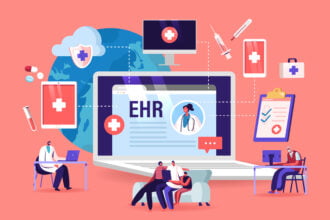According to CMS, through May of this year, 2,400 hospitals and 110,000 eligible professionals have received $5.7 billion in incentive payments for ensuring meaningful use of electronic health records, representing about half of all eligible hospitals and about 20% of all eligible providers.
According to CMS, through May of this year, 2,400 hospitals and 110,000 eligible professionals have received $5.7 billion in incentive payments for ensuring meaningful use of electronic health records, representing about half of all eligible hospitals and about 20% of all eligible providers.
Despite this widespread adoption EHRs, reliable market share data by vendor is still very hard to come by. So, when CMS recently updated its attestation data for midyear 2012, we took notice. Attestation, remember, is the process by which practitioners legally verify that they have used an EHR in way that merits one of those incentive payments. The data set includes more than 77,000 different attestations from 2011 through May of 2012 (note that it is not immediately clear why the data set has different totals than the CMS press release).
The sheer number of options for hospitals and providers stood out to us immediately. There are 405 separate EHR vendors that hospitals or providers have used to attest to meaningful use, with 336 of these providing ambulatory EHR products. It’s worth pausing here to note that by our count of the data found on the CMS Certified Health IT Product List, there are more than 550 separate ambulatory vendors with complete EHRs approved by CMS, meaning that despite the huge number of options, there were still well over 200 approved ambulatory vendors that have not had a single user qualify for an incentive payment yet!
Despite this enormous number of options, users attesting were fairly concentrated in the top vendors. Of these 336, the top 15 vendors represented 75% of all providers attesting. On the inpatient side, this concentration was even more pronounced, with the top 6 representing 75% of the total hospital attestations.
When we organize and dig into the data, a few other points stand out.
First, on the inpatient side, Cerner, MEDITECH, Epic, and Allscripts are the clear market leaders (particularly when you include HCA’s total in the MEDITECH column). Cerner’s recent earnings call included the note that 45% of their hospital clients have attested, which allows us to back into their installed hospital base.
The biggest surprise on this list is probably McKesson’s place at the bottom of the Top 10, since it was reported to have nearly 12% of the hospital market by Modern Healthcare Magazine as recently as 2011.
On the ambulatory side, there are a few things to note as well. First, the number of Epic users – the company does not market an ambulatory EHR, yet leads the list by far. Their dominant position here more than likely points to just how many hospitals have acquired clinics or now operate them in some way, a trend that has been continuing in recent months. Also interesting is the track record that Practice Fusion has amassed with its free EHR model supported by advertising, moving into 8th place overall in this list, and beating out more traditional players like Cerner (#9), Sage (#12), and McKesson (#14) .
Stepping back, some larger questions and points arise. Take a company like athenahealth, which reported 6,000+ physician users of its athenaClinicals product in its most recent 10-Q. On its website, Athena reports that “almost half” of its athenaClinicals providers are pursuing meaningful use and that 85% of these have successfully attested. That math basically tracks to the 2,000 number shown here, but it raises a question about what the other 3,000 providers are doing. Many of these companies are more opaque about their users, but it would be a fascinating exercise to match this data with their installed base of users to see who has had the most success qualifying their users for meaningful use incentive payments.
To us, the key takeaway from all of this data is that the existing market is probably not sustainable. Considering that one of the goals of the Meaningful Use incentive program has always been to improve interoperability in our healthcare industry, it’s hard to imagine that this market is best-served by having 600+ different vendors marketing thousands of different products. It certainly seems ripe for consolidation, particularly in the face of continued hospital-clinic alignment (and now payer-provider alignment as well), and the eventual drying up of Meaningful Use incentive payments.
Ironically, according to Mercom Capital Group roughly $150m in venture capital has been poured into the EMR/EHR market in the last 18 months, pointing to continued confidence (or overconfidence!) in this space.
Let us know what you think.










